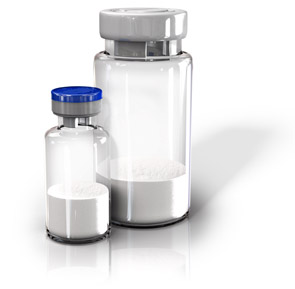Efficient Automated Visual Inspection Of Lyophilized Vials: Addressing Key Challenges

Table of Contents
Challenges of Manual Visual Inspection of Lyophilized Vials
Manual visual inspection of lyophilized vials presents significant challenges that impact both product quality and production efficiency.
Subjectivity and Variability
Human observation is inherently subjective and variable. This leads to inconsistencies in inspection results, impacting the reliability of quality control.
- High inter-operator variability: Different inspectors may have varying interpretations of defects, leading to inconsistencies.
- Fatigue-related errors: Prolonged manual inspection can lead to decreased attention and increased error rates.
- Subjective interpretation of defects: What one inspector considers a defect, another might overlook.
Studies have shown that inter-operator variability in manual inspection can lead to a significant discrepancy in defect detection rates, potentially compromising product quality. A consistent 5% error rate across a large batch can translate into considerable losses and potential safety concerns.
Low Throughput and High Labor Costs
Manual inspection is a time-consuming process, significantly limiting throughput and driving up labor costs.
- Slow inspection rates: Inspectors can only process a limited number of vials per hour.
- High labor costs: Manual inspection requires a substantial workforce, increasing operational expenses.
- Increased reliance on manual labor: This can create bottlenecks in the production process.
Automation can dramatically reduce inspection time. For example, an automated system might inspect 100 vials per minute compared to a human inspector's rate of 10-20 vials per minute, leading to substantial cost savings and increased production capacity.
Difficulty in Detecting Subtle Defects
The human eye has limitations in detecting subtle defects that can still significantly impact drug quality.
- Missing subtle cracks: Microscopic cracks in the vial may not be visible to the naked eye.
- Particulate matter: Tiny particles within the lyophilized cake might be missed during manual inspection.
- Inconsistencies in fill level: Slight variations in the fill level may not be easily detectable manually.
Automated systems equipped with high-resolution cameras and advanced image processing algorithms can detect these subtle defects with greater accuracy, ensuring higher product quality and patient safety.
Advantages of Automated Visual Inspection Systems for Lyophilized Vials
Automated visual inspection systems offer numerous advantages over manual methods, significantly improving quality control and production efficiency.
Enhanced Speed and Throughput
Automated systems dramatically increase the speed and throughput of the inspection process.
- Significant increase in inspection rate: Automated systems can inspect hundreds or even thousands of vials per hour.
- Reduced processing time: This leads to faster turnaround times and improved overall production efficiency.
- Increased production capacity: Higher throughput allows for greater production volume without increasing labor costs.
Automated systems can easily handle increased production demands, ensuring consistent output quality and timely delivery.
Improved Accuracy and Consistency
Automated systems provide objective and consistent inspection results, minimizing human error.
- Minimized human error: Automated systems are not susceptible to fatigue or subjective interpretation.
- Consistent defect detection: The system applies the same criteria to every vial, ensuring consistent quality control.
- Reliable quality control: This leads to more reliable and trustworthy inspection results.
Advanced algorithms and image processing techniques, including AI-powered defect classification, ensure precise and consistent identification of even the most subtle defects.
Reduced Costs and Improved ROI
While the initial investment in an automated system may be higher, the long-term cost savings and improved ROI are significant.
- Lower labor costs: Reduced reliance on manual labor translates to significant savings on wages and benefits.
- Reduced waste: Improved defect detection minimizes product waste and rework.
- Improved overall efficiency: Increased throughput and reduced errors contribute to higher overall efficiency.
A thorough cost-benefit analysis will demonstrate the significant return on investment provided by efficient automated visual inspection systems.
Data Acquisition and Analysis
Automated systems provide valuable data that can be used to optimize production processes.
- Real-time data collection: The system collects data on the number and type of defects detected.
- Trend analysis: Data analysis can identify patterns and trends in defect occurrence.
- Process optimization: This information can be used to improve manufacturing processes and reduce defect rates.
This data-driven approach to quality control enables continuous improvement and enhances overall product quality.
Key Technologies in Automated Visual Inspection Systems
Efficient automated visual inspection systems leverage several key technologies to achieve high accuracy and speed. High-resolution cameras capture detailed images of each vial, while sophisticated machine vision algorithms analyze these images to identify defects. Robotic handling systems automate the process of moving vials through the inspection system, ensuring efficient throughput. Advanced image processing techniques, such as image enhancement and pattern recognition, further improve the system's ability to detect subtle defects. Leading vendors in this space include [mention specific vendors/technologies]. These integrated systems offer unparalleled accuracy and efficiency in detecting various defects, such as cracks, particulate matter, and inconsistencies in fill level.
Conclusion
Manual visual inspection of lyophilized vials is a time-consuming, error-prone, and costly process. Efficient automated visual inspection of lyophilized vials offers a superior solution, providing significant improvements in speed, accuracy, consistency, and cost-effectiveness. Automated systems minimize human error, increase throughput, reduce waste, and provide valuable data for process optimization. By implementing these advanced systems, pharmaceutical manufacturers can ensure high-quality products, meet stringent regulatory requirements, and achieve a significant return on investment. Invest in efficient automated visual inspection of lyophilized vials to enhance your quality control and increase your production efficiency. Consider exploring the latest technologies and solutions available to optimize your inspection process and achieve superior product quality.

Featured Posts
-
 Recurring Easter Egg In Adam Sandler Films A Comprehensive List
May 11, 2025
Recurring Easter Egg In Adam Sandler Films A Comprehensive List
May 11, 2025 -
 Impact Of Trumps Policy On Nuclear Power Plant Construction Timeline
May 11, 2025
Impact Of Trumps Policy On Nuclear Power Plant Construction Timeline
May 11, 2025 -
 Billetera Virtual Uruguaya Apertura De Cuentas Sin Costo Para Argentinos
May 11, 2025
Billetera Virtual Uruguaya Apertura De Cuentas Sin Costo Para Argentinos
May 11, 2025 -
 Anunoby Con 27 Puntos Victoria De Knicks Sobre Sixers Su Novena Derrota
May 11, 2025
Anunoby Con 27 Puntos Victoria De Knicks Sobre Sixers Su Novena Derrota
May 11, 2025 -
 Bochum And Holstein Kiels Bundesliga Demise Leipzigs Ucl Failure
May 11, 2025
Bochum And Holstein Kiels Bundesliga Demise Leipzigs Ucl Failure
May 11, 2025
